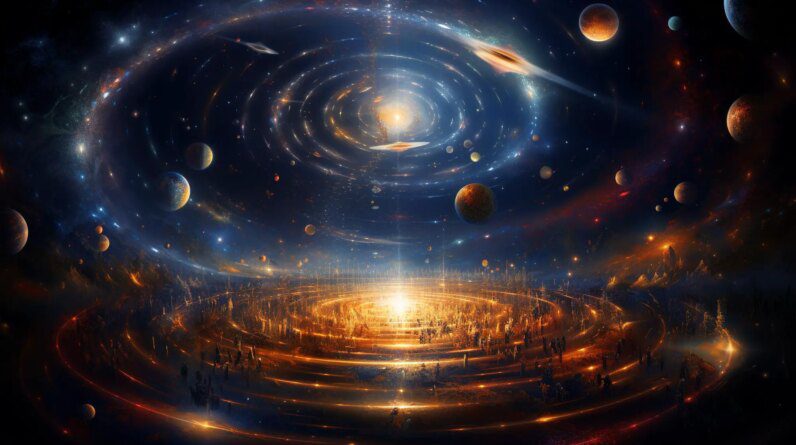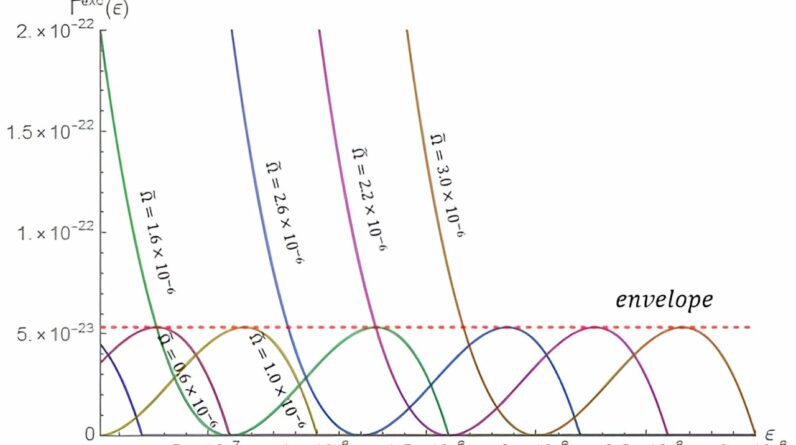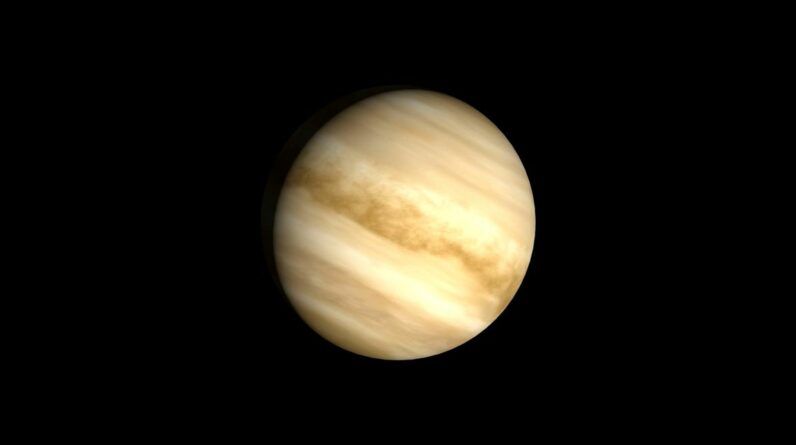
Um novo estudo sugere que o universo pode ter 26,7 bilhões de anos, o dobro da idade amplamente aceita de 13,7 bilhões de anos. O novo modelo, que incorpora a teoria da luz cansada de Zwicky e as constantes de acoplamento de Dirac em evolução, pode explicar a existência de galáxias jovens e maduras formadas apenas 300 milhões de anos após o Big Bang e propor uma interpretação revisada da constante cosmológica.
Um novo estudo sugere que o universo pode ter 26,7 bilhões de anos, desafiando a estimativa amplamente aceita de 13,7 bilhões de anos com base no modelo de concordância Lambda-CDM.
Nosso universo pode ter o dobro da idade das estimativas atuais, de acordo com um novo estudo que desafia o modelo cosmológico predominante e lança uma nova luz sobre o chamado “impossível problema inicial da galáxia”.
diz o autor Rajendra Gupta, professor associado de física na Escola de Ciências da Universidade de Ottawa.

“Nosso modelo recém-desenvolvido estende o tempo de formação da galáxia em vários bilhões de anos, tornando o universo de 26,7 bilhões de anos, não 13,7 como estimado anteriormente”. Rajendra Gupta – Professor Associado de Física na Faculdade de Ciências da Universidade de Ottawa. Crédito: Universidade de Ottawa
Durante anos, astrônomos e físicos calcularam a idade do nosso universo medindo o tempo decorrido desde[{” attribute=””>Big Bang and by studying the oldest stars based on the redshift of light coming from distant galaxies. In 2021, thanks to new techniques and advances in technology, the age of our universe was thus estimated at 13.797 billion years using the Lambda-CDM concordance model.
The Lambda-CDM (Lambda-Cold Dark Matter) concordance model, also known as the standard model of cosmology, is currently the simplest and most widely accepted model that describes the evolution of the universe from its earliest moments to the present day.
However, many scientists have been puzzled by the existence of stars like the Methuselah that appear to be older than the estimated age of our universe and by the discovery of early galaxies in an advanced state of evolution made possible by the James Webb Space Telescope. These galaxies, existing a mere 300 million years or so after the Big Bang, appear to have a level of maturity and mass typically associated with billions of years of cosmic evolution. Furthermore, they’re surprisingly small in size, adding another layer of mystery to the equation.
Zwicky’s tired light theory proposes that the redshift of light from distant galaxies is due to the gradual loss of energy by photons over vast cosmic distances. However, it was seen to conflict with observations. Yet Gupta found that “by allowing this theory to coexist with the expanding universe, it becomes possible to reinterpret the redshift as a hybrid phenomenon, rather than purely due to expansion.”
“Our newly-devised model stretches the galaxy formation time by several billion years, making the universe 26.7 billion years old, and not 13.7 as previously estimated.”
— Rajendra Gupta, Adjunct professor of physics in the Faculty of Science at the University of Ottawa
In addition to Zwicky’s tired light theory, Gupta introduces the idea of evolving “coupling constants,” as hypothesized by Paul Dirac. Coupling constants are fundamental physical constants that govern the interactions between particles. According to Dirac, these constants might have varied over time. By allowing them to evolve, the timeframe for the formation of early galaxies observed by the Webb telescope at high redshifts can be extended from a few hundred million years to several billion years. This provides a more feasible explanation for the advanced level of development and mass observed in these ancient galaxies.
Moreover, Gupta suggests that the traditional interpretation of the “cosmological constant,” which represents dark energy responsible for the accelerating expansion of the universe, needs revision. Instead, he proposes a constant that accounts for the evolution of the coupling constants. This modification in the cosmological model helps address the puzzle of small galaxy sizes observed in the early universe, allowing for more accurate observations.
On July 7, 2023, the study, “JWST early Universe observations and 𝚲CDM cosmology,” was published in the Monthly Notices of the Royal Astronomical Society (MNRAS) by Oxford University Press.
Reference: “JWST early Universe observations and ΛCDM cosmology” by R Gupta, 7 July 2023, Monthly Notices of the Royal Astronomical Society.
DOI: 10.1093/mnras/stad2032






